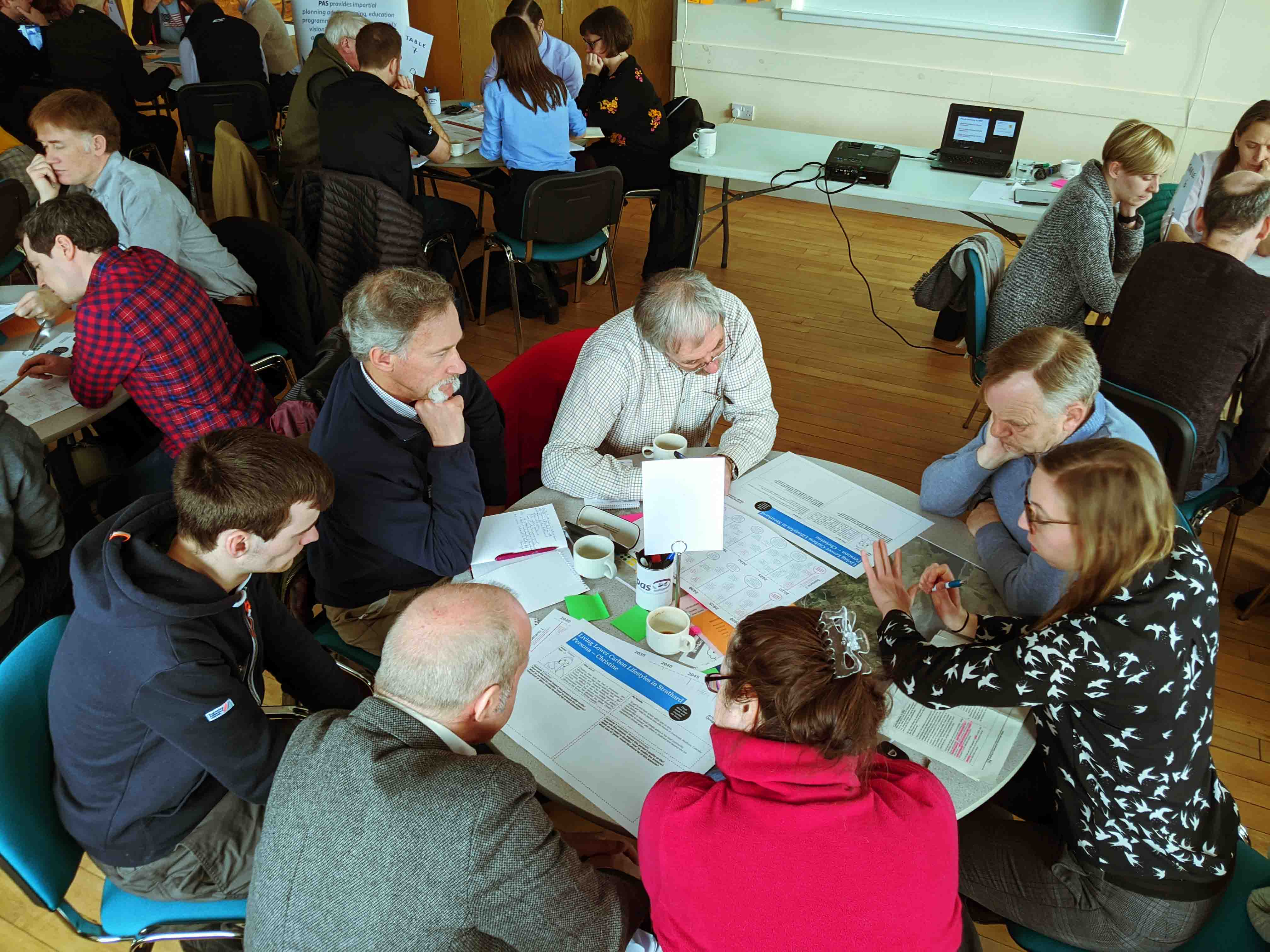LAUDF16: Collaborative approaches to 20-minute neighbourhoods

LAUDF16: Collaborative approaches to 20-minute neighbourhoods
Hybrid event | In-person and online
LAUDF 16
Are you a local government professional keen to learn more about good practice in design across Scotland?
The Local Authority Urban Design Forum (LAUDF) offers a space for local authority practitioners involved in urban design to share ideas and practice. Members come from all local authorities. Meetings typically include planning, architecture, urban design, transport and landscape professionals.
What are 20-minute neighbourhoods?
20-minute neighbourhoods are places that are designed so residents can meet their day-to-day needs within a 20-minute walk of their home; through access to safe walking and cycling routes, or by public transport. [source: ClimateXChange].
Why should you attend this event?
This event will share examples of 20-minute neighbourhoods being applied in Scotland and explain varying uses and whole-place collaborative approaches in the Scottish context.
Our next LAUDF event is on 23rd of November and is open to employees of local authorities in Scotland.
What is a hybrid event?
A hybrid event is presented in person and online. This event will be delivered at the Architecture and Design Scotland Bakehouse Close office and simultaneously broadcasted online on MS Teams. You can either join in-person or through MS teams, depending on the type of ticket you register for through our Eventbrite ticketing system.
Speakers and Presentations
20-minute neighbourhoods – mapping, measuring and learning
It is expected that the concept of 20-minute neighbourhoods will continue to form a critical policy consideration within the NPF4, given its ability to reduce the reliance on unsustainable modes of transport and also improve the health and wellbeing of our communities.
In recognition that the some of the key variables of this concept are measurable, West Dunbartonshire Council are exploring how digital mapping systems can be used to assess resident’s access to key services. Initially, the session will explore how the mapping tool has been defined and developed, before exploring the insights that have been gathered and examples of its practical application.
20-minute Neighbourhoods – liveability
Whether they are called 20-minute neighbourhoods, 15-minute places, walkable neighbourhoods or places of small distances, living locally with easy access to most of the facilities and activities we need on a daily basis is something that can benefit everyone.
However, 20-minute neighbourhoods are not simply about accessing amenities. They can have real benefits for health, the environment and the local economy. They can help to reduce car use, encourage people to walk, wheel and cycle more, provide easy access to green spaces and help to build connections and a positive sense of community and belonging.
Many existing places will already operate as 20-minute neighbourhoods, some may need some changes to harness the benefits of the concept. New and emerging places will require careful planning and consideration of the many assets and interconnections required by a community to deliver 20-minute neighbourhoods.
This presentation will talk about some of those approaches of careful planning and consideration using mapping, data, engagement, and the experience of Place.
Unpacking the concept of 20-minute neighbourhoods: separating ‘ends’ from ‘means’
Growing interest in the urban design concept of the ’20-minute neighbourhoods’ (20MNs) has been greatly accelerated by the COVID-19 pandemic. It has been presented as a way of increasing the quality of local environments by enabling people to meet their daily needs through access to safe walking and cycling routes or by public transport.
Internationally, it has captured the imagination of political decision-makers, built-environment practitioners, and communities alike, as a life-affirming post-pandemic vision, held up as achieving environmental, health and economic improvements as well as reducing inequalities experienced by many. This presentation’s overall purpose is to separate the ends pursued in 20MNs from means available for achieving them. The presentation will unpack the following questions:
a) what are described as the desired outcomes for 20MNs - the normatively based ends which planners, architects and decision makers want 20MNs to achieve
b) the means (the mechanisms, levers, triggers and causal factors) that have to be correctly assembled and lined up for 20MNs to operate as intended; and
(c) in order to avoid naive environmental determinism, the behavioural changes required to support the operation of 20MNs even where the required configuration of means can be achieved.
